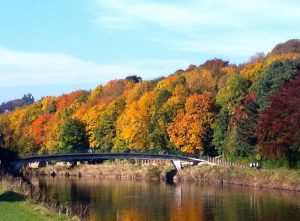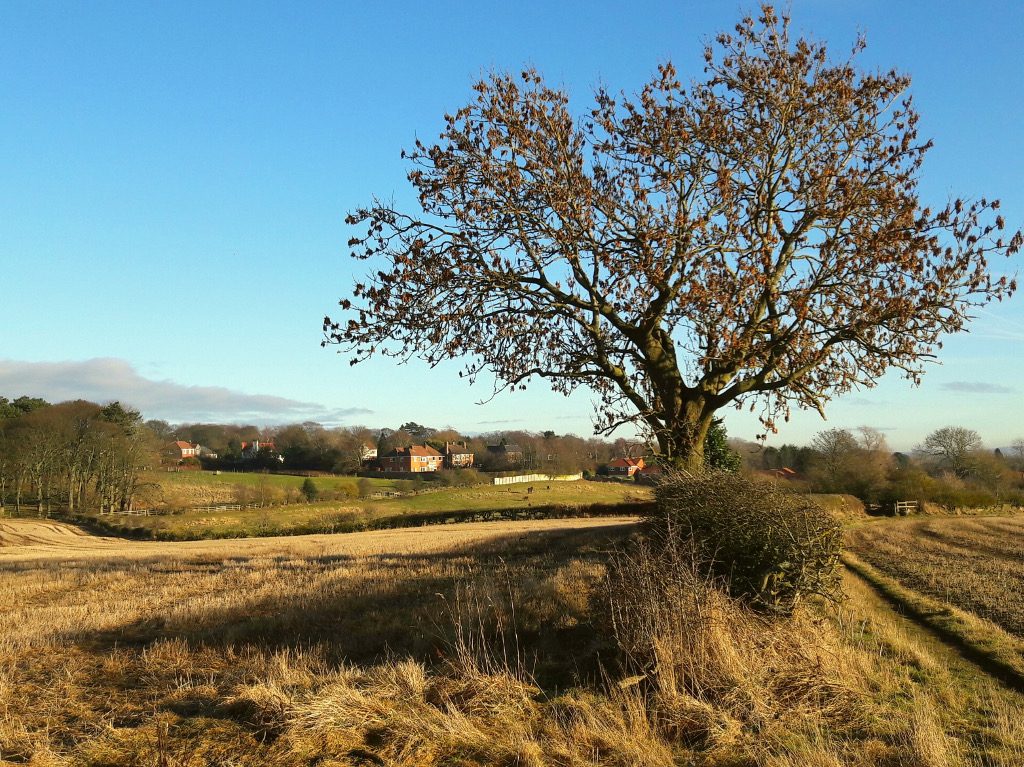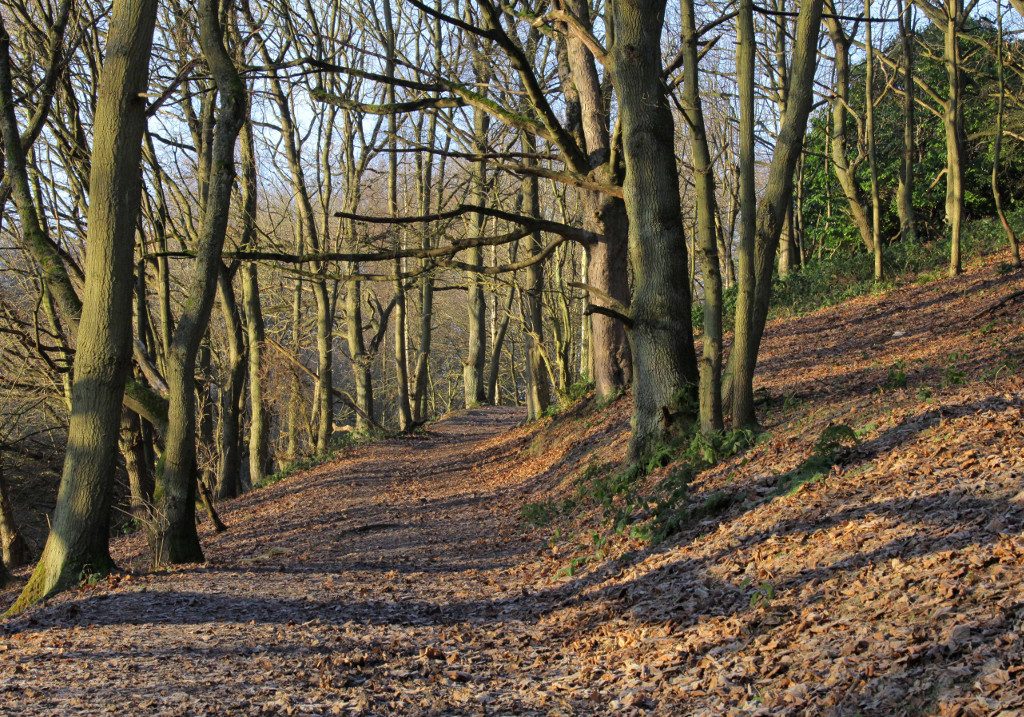4.2(b).1 Vision and Objectives
4.60
Vision
Preserving and enhancing natural green spaces and networks of greenery for the leisure, health, economic and environmental benefits they provide for residents, visitors and people working in the City.
4.61
Objectives
- To preserve and enhance the green infrastructure in Our Neighbourhood;
- To maintain and enhance the green assets of the World Heritage Site, and its inner setting, and of the character areas of the Durham City Conservation Area;
- To address deficiencies of green infrastructure within Our Neighbourhood;
- To implement the NPPF which seeks to promote sustainable development and emphasises the importance of promoting healthy communities, protecting Green Belt land, meeting the challenges of climate change and flooding, and conserving and enhancing the natural environment.
4.2(b).2 Context
Definition of green assets
4.62 Green infrastructure is the network of green assets (multi-functional green spaces and natural resources) within the City. Green assets cover a range of spatial scales and types of use. They include:
- the River and riverbanks;
- wildlife sites and wildlife habitats;
- woodland;
- parks and botanic gardens;
- public, community and private gardens;
- green landscaped areas;
- the grounds of the University, colleges, schools, hospitals, businesses and business parks;
- highway verges and railway embankments;
- footpaths and green corridors;
- cemeteries and churchyards;
- allotments and community gardens;
- sports and playing fields;
- amenity green spaces ;
- designated Local Green Spaces;
- the Green Belt;
- trees, hedgerows, grass, vegetation;
- built structures such as green roofs, green walls, natural water features, bird and bat boxes and roosting sites.
4.63 The city’s attractiveness and character is enhanced by the natural open spaces and networks of greenery which are valued throughout the year by residents, visitors and those working in the city. This green infrastructure serves a variety of purposes: the character setting of the World Heritage site and conservation areas, attractive open spaces and footpaths for recreation and connections between communities, beneficial effects on people’s health, an attractive setting which encourages new businesses and new residents to move to the City, visitor and tourist attractions, beneficial habitats for biodiversity and mitigating the effects of climate change.
4.64 Table E1 in Appendix E lists landscape and natural environment sites in Our Neighbourhood.
4.2(b).3. Justification
4.65 This justification refers to the Green Infrastructure theme as a whole. Additional, specific justification for an individual policy is given with the policy itself.
4.66 The Forum’s priority survey (Durham City Neighbourhood Planning Forum, 2015) identified that local people valued highly the green infrastructure of the City. One of the highest rated aspects was the riverbank setting and riverside walks. In addition they rated the woodland ‘wedges’ which bring greenspace into city, pedestrianised areas, Council flower displays and tree plantings, parks and nature areas. One of their priorities is to protect green spaces/green belt and the environment. In the Forum’s survey of the views of young people (Durham City Neighbourhood Planning Forum, 2016a), one of their priorities included the River. The young people all enjoyed the river and the river walks, and felt that even more could be made of the riverbanks to improve access and leisure opportunities.
4.67 The NPPF covers green infrastructure in a number of sections: 11. Conserving and enhancing the natural environment; 8. Promoting healthy communities; 9. Protecting Green Belt land; 10. Meeting the challenge of climate change, flooding and coastal change. It calls for “planning positively for the creation, protection, enhancement and management of networks of biodiversity and green infrastructure”. (NPPF para 114)
4.68 ‘The Natural Choice’ (the natural environment white paper: UK Government, 2011) emphasises that a healthy, properly functioning natural environment is the foundation of sustained economic growth, prospering communities and personal wellbeing. Its aims include: facilitating greater local action to protect and improve nature; creating a green economy, in which economic growth and the health of our natural resources sustain each other, and markets, business and Government better reflect the value of nature; strengthening the connections between people and nature to the benefit of both. The biodiversity strategy (Department for Environment, Food and Rural Affairs, 2011) builds on the natural environment white paper. Its mission is to halt overall biodiversity loss, support healthy well-functioning ecosystems and establish coherent ecological networks, with more and better places for nature for the benefit of wildlife and people. Relevant aspects include: Putting people at the heart of policy (e.g. Establishing a new green areas designation, empowering communities to protect local environments that are important to them.); Planning and Development (e.g. retain the protection and improvement of the natural environment as core objectives of the planning system).
4.69 The ‘Green Infrastructure Guidance’ (Natural England, 2009) provides a comprehensive overview of the concept of green infrastructure, signposts to other relevant information, and maps out wider policy priorities and drivers for green infrastructure. Its aim is to drive forward green infrastructure planning and delivery.
4.70 More than 70 organisations from across multiple sectors have joined forces to create a ‘Charter for Trees, Woods and People’ with the aim of guiding UK policy and practice. This Charter will be launched in November 2017and will recognise, celebrate and protect this right. The Tree Charter principles outline the importance of green infrastructure, such as trees, woods and hedges, i.e. habitats for diverse species (providing homes, food and safe routes); cultural value; providing drainage and cooling, improving air quality and purifying water; carbon capture; physical and mental health benefits. Planning has a role to play by protecting existing green assets, particularly ancient trees and woods, and requiring new developments “to be balanced with green infrastructure, making space for trees.”
4.71 A number of Durham County Council strategies and documents are relevant to green infrastructure. The Green Infrastructure Strategy (Durham County Council, 2012b, p.5) identified a number of policy recommendations relevant to our Neighbourhood Plan:
- “Access and recreation – existing public open spaces and rights of way should be protected; new development should contain sufficient open space for new and existing residents’ needs; open spaces and rights of way should be good-quality, attractive and functional …
- Biodiversity and geodiversity – designated sites and other ecologically valuable assets will be protected from the direct or indirect impacts of development; new green spaces will retain, reinforce or create links to the existing GI network; green spaces, roofs and walls will be encouraged
- Economic development – inequalities in the quality of living environments will be addressed; industries which depend upon green infrastructure will be supported; GI will be used as an asset – to improve the image of areas and attract inward investment, and to provide ecosystem services
- Energy – the development of new wind turbines, biomass facilities and small-scale hydro-electricity facilities will be permitted where they are feasible and the environmental impacts are acceptable
- Health and wellbeing – healthy lifestyles will be supported by the protection and enhancement of open spaces and the public rights of way network. Landscape – designated landscapes and landscape conservation areas will be protected and managed; proposals to improve the countryside around towns and villages will be supported
- Townscape – sites of historic interest, and their settings, will be protected and enhanced; the use of green infrastructure as a design feature will be required where appropriate; green infrastructure features which contribute to townscape will be protected
- Trees, woodland and forestry – the creation of new woodlands will be supported; forestry and other woodland industries will be permitted where appropriate; urban trees will be protected.
- Water supply, drainage and flood control – the quality of water resources in rivers, streams and other water bodies will be protected and enhanced; Sustainable Urban Drainage Systems, which use green infrastructure to manage flooding, will be required in new development where appropriate, particularly in flood risk areas.”
4.72 The Sustainable Communities Strategy for County Durham 2014-2030 (County Durham Partnership, 2014) has a section ‘Altogether greener’ with the aim of maximising the value and benefits of Durham’s natural environment. The Countryside and Rights of Way Act 2000 placed an obligation on local authorities to produce and maintain a Rights of Way Improvement Plan (ROWIP). The Rights of Way Improvement Plan for County Durham 2015–2018 (Durham County Council, 2015d) is the third ROWIP for County Durham. The “opportunities” (essentially the policies) identified in the plan include protecting and maintaining the network, modernising by improving existing routes, and influencing travel and lifestyle choices by creating and promoting well-designed, high-quality active travel routes. In relation to development there is an aim that paths are provided and improved as part of developments, and to improve gateway sites to public green spaces. Enhancements to the natural environment and biodiversity should be progressed wherever possible as part of improvement schemes.
4.73 A key document is the County Durham Open Space, Sport and Recreation Needs Assessment (2016b, currently being updated). The complementary Playing Pitch Strategy (Durham County Council, 2011a, 2012c) contains an audit of provision and aims to ensure that the quantity and quality of playing pitches and accessibility of playing pitches meets the needs of the local population now and in the future. The previous 2010 open space, sport and recreation needs assessment (Durham County Council, 2010a,b) identified deficiencies of Green Infrastructure within the Durham City Area Action Partnership area (which covers a wider area than Our Neighbourhood):
This AAP has a significant under provision of parks and gardens, semi-natural greenspace and allotments, but only small over provision of other typologies. So whilst some of the shortfalls could be met through utilising existing open space, opportunities should be sought for new provision within the AAP. (2010a, p.83).
4.74 As well as policies in this theme that address issues related to open green spaces, community Policy C5.
4.75 Durham City falls within The Wear Lowlands character area of the County Durham Landscape Character Assessment and Landscape Strategy (Durham County Council, 2008a,b). The strategy for the Wear Lowlands is: “To conserve the character of the valley landscapes of the Wear while enhancing those areas which have been most affected by development, accommodating the needs of nearby urban populations while maintaining a strong rural identity to the countryside between towns and villages. A key component of the strategy for this settled landscape is the improvement of the countryside around towns and villages.” (Durham County Council, 2008b, p.104). These documents contain detailed contextual information and numerous objectives. Baseline information on biodiversity and geodiversity is available in the Council’s Technical Paper No. 12 (Durham County Council, 2009a).
4.76 The saved policies from the Durham City Local Plan include references to the Green Belt, open spaces within Durham City and conservation areas, areas of landscape value, historic parks and gardens and battlefield sites, trees and hedgerows, nature conservation including Sites of Special Scientific Interest, Sites of Nature Conservation Interest, wildlife corridors and local nature reserves, and cycling and walking networks. (City of Durham Council, 2004; Durham County Council, 2015a: E1,2,2A,5,5a, 0,14 to 20,25,26; R5,11 to 13; Q5,6). A number of these policies have been incorporated into the policies below.
 4.77 The Durham City Regeneration Masterplan (Durham County Council, 2014c) and its update (Durham County Council, 2016f) has a number of implementation projects and actions relevant to the green infrastructure of Our Neighbourhood (a subset of the Durham City area covered by the Masterplan), i.e. ‘Keeping Durham Green’ by e.g. the renovation of Wharton Park (now completed), care of the River Wear banks, adding to existing green spaces.
4.77 The Durham City Regeneration Masterplan (Durham County Council, 2014c) and its update (Durham County Council, 2016f) has a number of implementation projects and actions relevant to the green infrastructure of Our Neighbourhood (a subset of the Durham City area covered by the Masterplan), i.e. ‘Keeping Durham Green’ by e.g. the renovation of Wharton Park (now completed), care of the River Wear banks, adding to existing green spaces.
4.78 Local strategies and initiatives emphasise the importance of the green infrastructure within the City, in particular the Durham City Conservation Area Appraisal (Durham County Council, 2016e) and the Durham Castle and Cathedral World Heritage Site Management Plan (Durham World Heritage Site, 2017). The Durham City Conservation Area comprises “the pre-1900 expansion of the City and the majority of the natural ‘bowl’ (the upper slopes of which present a largely rural backdrop to views of the Cathedral), the important green wedges of open countryside and other significant green areas which contribute to and enhance the setting of the historic buildings and the city as a whole” (Durham County Council, 2016e, Executive Summary, p.2). Management proposals for each character area are available, which include management, conservation and enhancement of green assets. However, the management plan for the Durham City Conservation Area has not yet been published. Most of Our Neighbourhood falls within the area covered by the World Heritage Site and by its inner setting. The immediate setting of the river and the tree lined river banks is a key component of the site’s Outstanding Universal Value. The inner setting of the site, and protection of views to and from the site, is another key component.
4.2(b).4 Planning Policies and Proposals for Land Use
4.79
- Policy G1: Preserving and Enhancing Green Infrastructure
- Policy G2: Designation of Local Green Spaces
- Policy G3: Creation of the Emerald Network
- Policy G4: Enhancing the Beneficial Use of the Green Belt
Next section: Policy G1: Preserving and Enhancing Green Infrastructure




2 Responses to Theme 2(b): A Beautiful and Historic City – Green Infrastructure 2017